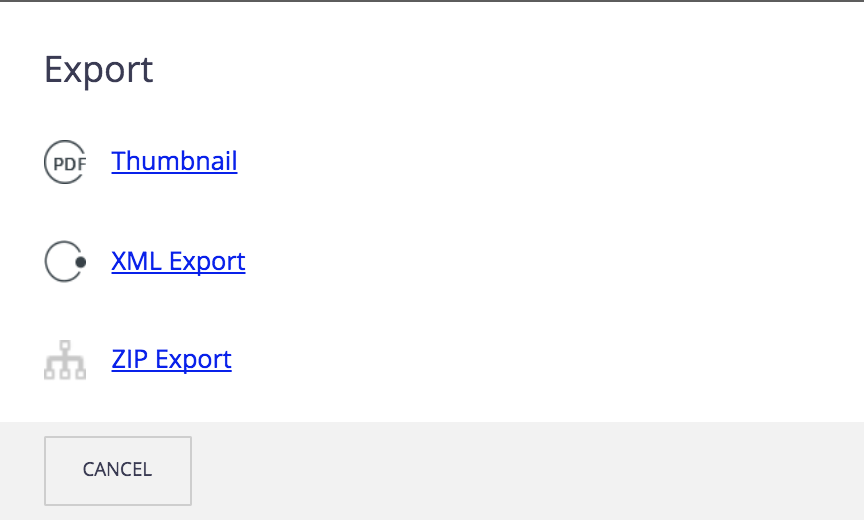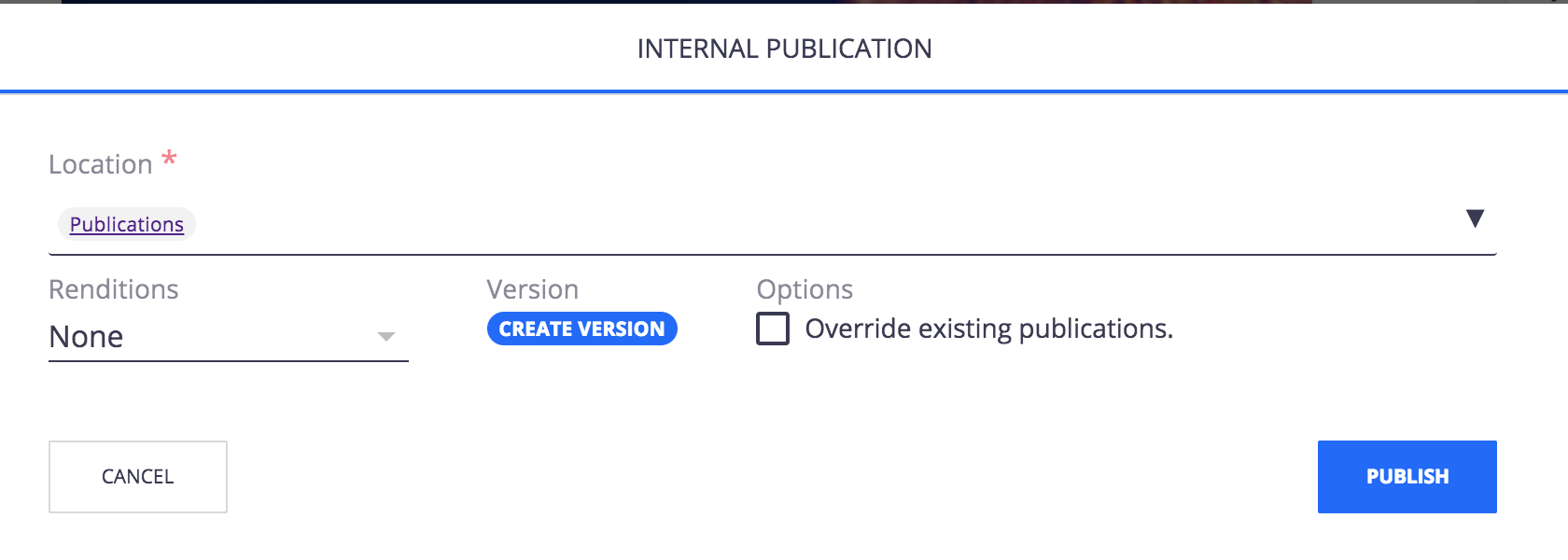Sharing
The button ![]() gives you the permanent link to the document concerned, in order to easily share it.
gives you the permanent link to the document concerned, in order to easily share it.
You can also use Nuxeo Easyshare add-on which enables sharing files from the repository with external users not requiring a login. For more information, see EasyShare Documentation.
Downloading
Users can download documents on their computer. It is possible to download:
- One document at a time
- A collection
- An entire workspace, folder, section
From a Document
- Go to the document you want to download
- Click on the Download button
 under the preview of your document.
Your document is downloaded on your computer.
under the preview of your document.
Your document is downloaded on your computer.
From a Folder
- Go to the folder/workspace that you want
- Select several documents A top bar is displayed with document actions
- Click on the download button
 The documents are downloaded as a .zip on your computer.
The documents are downloaded as a .zip on your computer.
Exporting
Users can export documents on their computer. It is possible to export:
- One document at a time
- An entire workspace, folder, section
From a Folder
- The XML export is a low level export that enables users to either get the XML definition of the document or get a folder for each exported document that contains:
- a document.xml file holding the document's metadata and various information such as the applied access rights,
- a .blob file that holds the binary content of the document. This blob is referenced in the document.xml file;
- The ZIP export enables you to export a whole workspace, section or folder in a zipped XML folder. This export is only available on folderish documents.
- CSV export enables you to export a table listing of all the properties of the content in CSV format. This export is available on folderish documents, search results and collections. CSV export
 is available at the top-right of document listing.
is available at the top-right of document listing.
From a Document
- The PDF export enables you to get a PDF version of your document. This export is only available on non-folderish documents.
- The ZIP Export enables you to get a zipped folder with the documents' main attachment (.pdf, .doc files). This export is only available on non-folderish documents.
- The XML export is a low level export that enables users to either get the XML definition of the document or get a folder for each exported document that contains:
- document.xml file holding the document's metadata and various information such as the applied access rights,
- A .blob file that holds the binary content of the document. This blob is referenced in the document.xml file;
The exports are available by clicking on the export button ![]() .
.
Low-Level Exports
XML export is a low level export that enables users to get a set of information on documents in an XML file. This export type is useful for debugging, and as such, is mainly intended to administrators. You can export:
- A single document
- The structure of a folder
XML Export of a Single Document
The XML export of a document enables users to get a folder for the exported document that contains:
- A document.xml file holding the document's various information (the applied access rights, the document's metadata, its path)
- A .blob file that holds the binary content of the document. This blob is referenced in the document.xml file
To get the XML export of a document, from the document, click on the icon ![]() and select ZIP Export.
and select ZIP Export.


When you unzip it, you get a folder named from the document, that contains a document.xml file and .blob for each attachment of the document.
XML Export of a Folder
It is possible to export a whole workspace, section or folder in a zipped XML folder. This specific export enables users to import the folder back, with the same access rights definition.
To get the XML export of a folder, from the folder (or workspace or section), click on the icon ![]() and select ZIP Export on the popup window.
and select ZIP Export on the popup window.
When you unzip it, you get a folder named from the document, that contains a document.xml file and .blob for each attachment of the document.
You can also use Nuxeo File System Exporter to export Documents. For more information, see Nuxeo File System Exporter.
Publishing
Working with Sections
When a document is ready for distribution, you must publish it in a section. Sections are spaces dedicated to the distribution of documents to a wider audience.
Sections are spaces managed like workspaces. No section is created by default, except the sections root. The main difference with workspaces is the fact that documents can't be edited in sections.
You are free to organize your section to fit your project or your needs the best. The section tree is completely independent from workspaces. Their structures are not linked.
As in workspaces, access to sections is determined by permissions.
Publishing Documents
Publishing a document means publishing a version of the document as it is at the time of publication.
After publication, if you modify the document in the workspace, it is not modified in the section.
When you publish a document, the following elements are kept from the workspace document:
- The metadata
- All attachments
- The document history (Event log tab only)
- The tags (if this is a first publication — in case of a republication, tags from the workspace are merged with existing - tags on the published document)
- However, comments are not kept from the workspace document.
To publish a document:
- From the View of the document in the workspace, click
 in the top action toolbar and select Publish Document.
in the top action toolbar and select Publish Document.


- Select the rendition that should be published, for example None (same document format as in the workspace) or a PDF version of the document.
- Optional: Create a version.
- Click Publish.
Renditions are alternative representations of a document, or its content such as:
- A PDF representation of office files
- A watermarked image
- A resized video
- An XML export of the document
There are several renditions available for your publications. This list of renditions is configurable. If you select no rendition by selecting None in the list, it implies a publication of the document itself.
Selecting Default rendition implies a format that depends of the document type, schemas and facets at the time of publication.
To unpublish a document:
From the Publication tab of the document in the workspace, click Unpublish on the publication you want to revert.
To revert all the publication of this document, click Unpublish All.